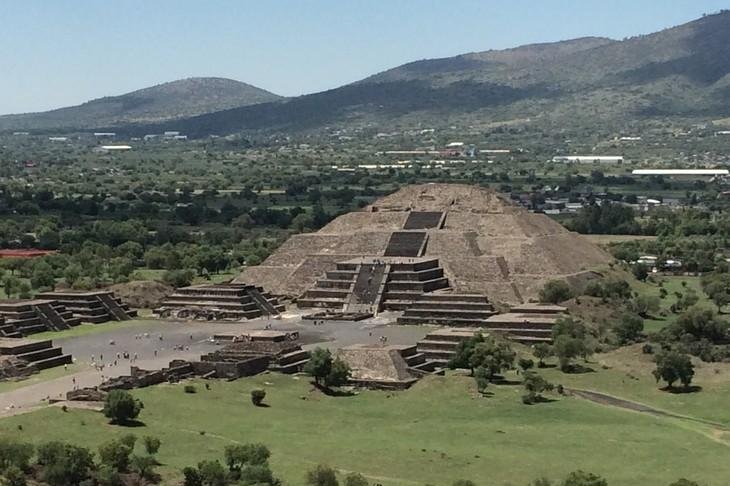Teotithuacan's Moon pyramid. Photo by Gina Buckley-Yost/Penn State
STATE COLLEGE, Pa., Oct. 15 (UPI) -- The rise and fall of city-states in ancient Mexico and Peru were significantly influenced by climate variability, according to researchers at Pennsylvania State University.
In a new study, published in the journal Philosophical Transactions A, scientists suggest climate records align neatly with the successes and failures of major agrarian states in Central and South America.
"There is a long tradition of archaeology in both central Mexico and the Peruvian highlands," study author Douglas Kennett, a professor of environmental archaeology at Penn State, said in a press release. "There are also new high resolution climate records available that have not yet been capitalized on by archaeologists."
Previous analysis of oxygen isotope levels in ice cores and stalagmites have helped scientists reconstruct an accurate climate record.
With the help of Norbert Marwan, a climatologist and statistician at Germany's Potsdam Institute for Climate Impact Research, Kennett analyzed the role of rainfall totals and temperature in enabling the rise and fall of three preindustrial Mexican states -- Teotihuacan from 100 B.C. to A.D. 650, Toltec from 900 to 1150 and the Aztec Empire from 1400 to 1519.
The analysis showed the first three hundred years of Teotihuacan were buoyed by steady rains and moderate temperatures, whereas the state's last hundred years featured volatile weather patterns followed by extended drought.
A wetter, more stable climate began to emerge in the 10th century, around the time the Toltec Empire and its capital city Tula came to prominence. Similarly, its decline corresponds with climate volatility.
The rise of the massive Tenochtitlan city-state in the 15th century also benefited from extremely wet and stable conditions, but the arrival of conquistadors muddy the abilities of researchers to gauge the climate's effects on Tenochtitlan's decline.
The arc of major city-states in the Andes of ancient Peru -- Wari and Tiwanaku from 300 B.C. to A.D. 1000 and Inca from 1438 to 1525 -- tell a similar story. Wet, warm and stable climates encouraged success, while volatility hastened decline. Though like Teotihuacan, the Incan empire's fall was largely influenced by the arrival of Europeans.
"While there is some support for the hypothesis that stable climatic conditions favored political centralization and that unstable climatic conditions contributed to sociopolitical instability and decentralization, additional chronological work is needed," said Kennett.















